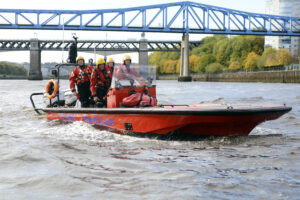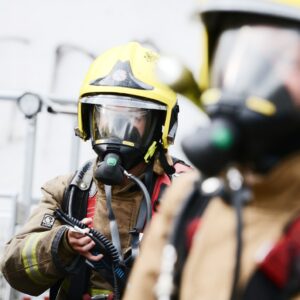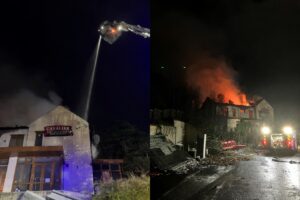news
Tyne and Wear Fire and Rescue Service Response proposals to be discussed by Fire Authority
The future of Tyne and Wear Fire and Rescue Service (TWFRS) operational response will be discussed by the Tyne and Wear Fire Authority at its meeting on Monday 5th November at 10.30am.
Three proposals for change will be the basis of a 10-week public consultation, subject to the Fire Authority’s approval, starting on the 5th November and running until 14th January 2019.
The changes are driven by financial pressures butwill prepare the Service for a future that will involve meeting the challenges of a changing demand for its services. They will also help to ensure the service retains its continued commitment to remain sustainable as reductions in funding continue to affect its overall budget.
TWFRS Chief Fire Officer, Chris Lowther said: “Tyne and Wear Fire and Rescue Service has faced some of the worst funding settlements across fire and rescue in England since austerity began in 2010. By 2019/20 we will have seen a 19% budget cut by £11.3m to £48.1m. We have also had to manage higher costs faced by the Authority such as inflation and pay awards which means we have actually had to make total budget savings across the Service of just over £25m.
“As a result, we need to look at how we resource our operational responsive services, such as our fire stations and control room, to ensure we have the correct balance.
“Over the last year we have carried out extensive reviews as part of our Integrated Risk Management Plan (IRMP). We have used this learning to develop the current proposals so we can continue to provide a robust response to incidents. The proposals will also help to ensure that our fire and rescue service remains sustainable and flexible and that our communities still receive an excellent response from us.
“These proposals will be discussed by Fire Authority members who are being asked to seek the opinions of the public in Tyne and Wear. At this stage it is important to understand that nothing has been decided.”
The Service has developed detailed analysis showing the demands the Service faces and potential effects any changes may have on the response to incidents. This work created three proposals for change that will ensure that the Service can continue to be one of the fastest fire and rescue services in England when responding to life threatening incidents.
The proposal includes:
Proposal 1 – Dynamically adjust the distribution and availability of appliances based on risk and demand
Under this proposal, resources including fire engines, special appliances and Targeted Response Vehicles (TRVs) would be re-positioned based on community risk and expected demand.
This would mean:
One fire engine from Gosforth Community Fire Station will be relocated to Newcastle Central Community Fire Station alongside a TRV from Washington Community Fire Station.
A further fire engine and TRV from Washington Community Fire Station will be relocated to Sunderland Central Community Fire Station.
TRVs will be sent in support of larger lifesaving appliances at incidents such as dwelling fires.
Heavy Rescue appliances at Newcastle Central and Hebburn Community Fire Stations, that are crewed when needed, will be relocated to Wallsend and South Shields Community Fire Stations.
Proposal 2 – Introduce a range of duty systems based on risk and demand
This proposal involves redefining the duty system operated on certain community fire stations to better accommodate relatively lower levels of community risk and incident demand whilst minimising the impact on the speed of response.
This would mean:
The fire engines at Wallsend and Hebburn Community Fire Stations become Day Crewing (On-Call)
Supporting cover will be provided during the night by the second fire engines from Tynemouth and South Shields Community Fire Stations.
One fire engine at Farringdon Community Fire Station would become On-Call
Attendance times will see a small increase, with average response across Tyne and Wear for high-risk incidents, those involving people and property, slowing by up to 17 seconds. Even with these changes Tyne and Wear would continue to remain one of the fastest responding fire and rescue services in England.
Proposal 3 – Adjust the staffing model to deliver a more effective and efficient use of resources
The third proposal is to adjust the way firefighters and control room staff work. This includes a reduction in some posts to improve efficiency and the introduction of more flexibility in existing shift patterns based on emergency call demand.
If all proposals were implemented in full 70 posts would be removed from the Service and it is expected that this would be achieved without the need for redundancies. The changes would result in savings of £3.3m and fully implemented by April 2021.
If agreed by the Fire Authority, the consultation will run for 10 weeks from the 5th November and TWFRS will offer people many ways to feedback including public events, an online survey or by mail.
The Fire Authority meeting is at 10.30am on Monday 5th November. TWFRS senior officers will be available for media interviews immediately after the meeting.








